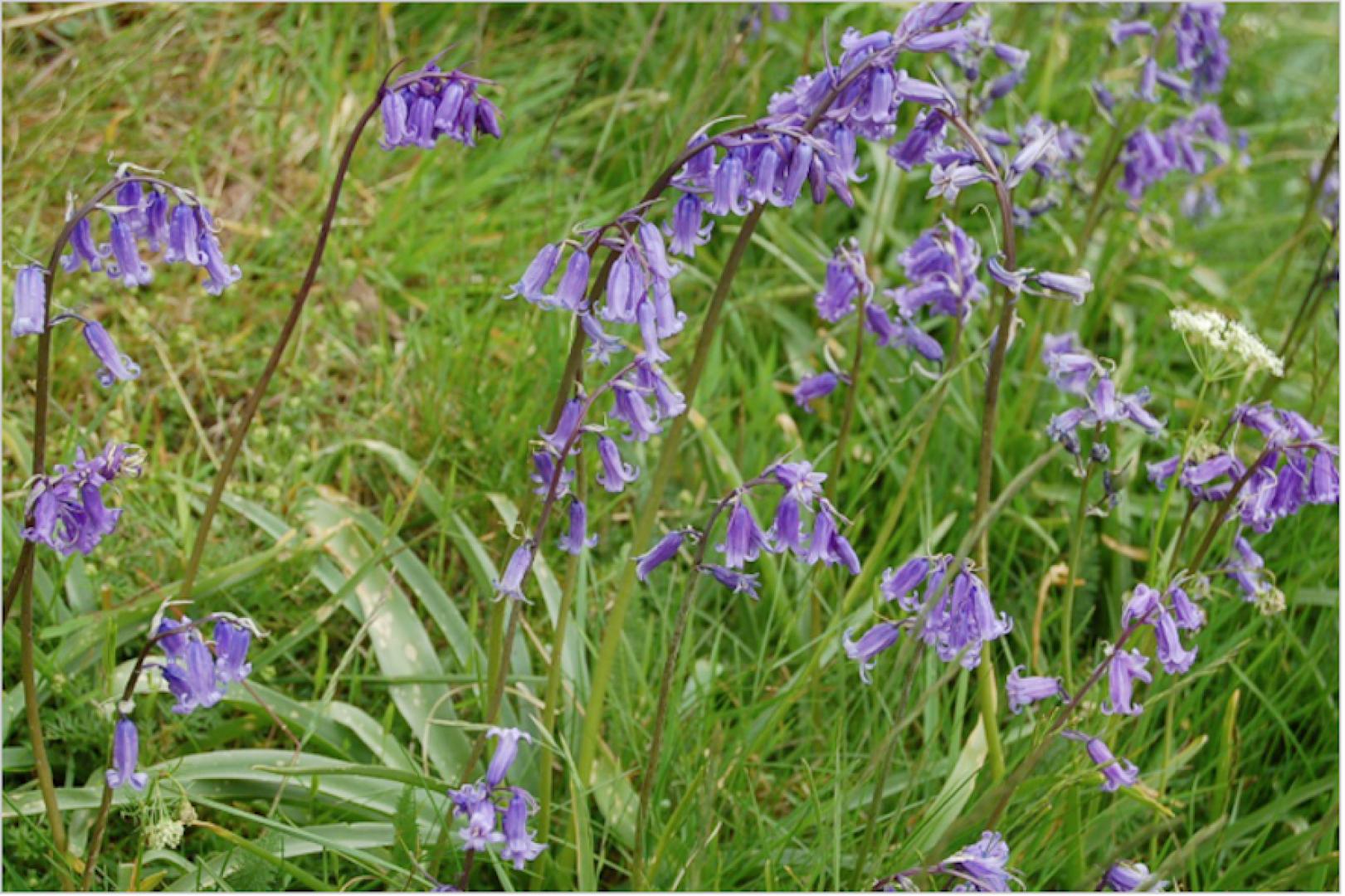Bluebell (Hyacinthoides non-scripta)
BLUEBELLS get off to a flying start, flowering quite early on in May. These iconic harbingers of the coming summer carpet our woodlands with vast swathes of blue and must lift the spirits of all who survey them.
It might surprise you to know that the bluebell is not a member of the lily but found in the Asparagus family alongside the Star-of-Bethlehem, hyacinth and squill.
Our native species Hyacinthoides non-scripta is an indicator of ancient woodland and can be spotted in woods, hedgerows and shady banks from May onwards.
The bright green linear leaves with their hooded tips set off the range of blues as the flowers unfold.
Also known as griggles and crow’s toes, the non-scriptus in the latin name of the bluebell means “not written on” .
This was to distinguish it from the hyacinth of Greek legend, supposedly inscribed by Apollo with the words AIAI (alas) on the death of prince Hyacinth. Do let us know if you find any hyacinths so inscribed.
The flowers hang down from one side of the long flower stalk which droops at the tip.
They consist of six blue petal like structures (tepals) arranged in a tube with the tips strongly curved back to form the characteristic bell.
Strongly scented, the insects soon detect the flowers are open and descend to the base of the flower collecting pollen as they brush past the creamy anthers.
However, closer inspection of your bluebell is required if you are to be confident in your identification.
There are actually three commonly found in the UK, our native species described above and two more – the Spanish bluebell and the hybrid, which is a cross between the Spanish and our native bluebell.
There are a number of useful features to help you distinguish the Spanish bluebell from our native species.
First of all, instead of the bluebells hanging down on one side as in the native bluebell, the erect flowers are positioned all of the way around the flower stalk.
Secondly, the tips of the flower do not curve back in the Spanish bluebell but are straight edged.
Finally, the anthers tend to be blue rather than cream. The hybrid displays features which are a combination of both species and does prove more of a challenge. Perhaps an interesting task for a sunny day among the bluebells.
l If you are interested in learning more about botany, then you are very welcome to join a Zoom meeting of the Upper Teesdale Botany Group. Our next meeting is at 7pm on Monday, April 26.
The presentation will tell us about work that is being done to improve the variety of wild flowers in the local meadows.
We will then have a botanical discussion.
Contact Dr Margaret Bradshaw via email: [email protected].
Lizzie Maddison is a member of the Upper Teesdale Botany Group
ADVERTISEMENT
Flora and fauna: Harbinger of summer to lift the spirits
ADVERTISEMENT
ADVERTISEMENT
ADVERTISEMENT



